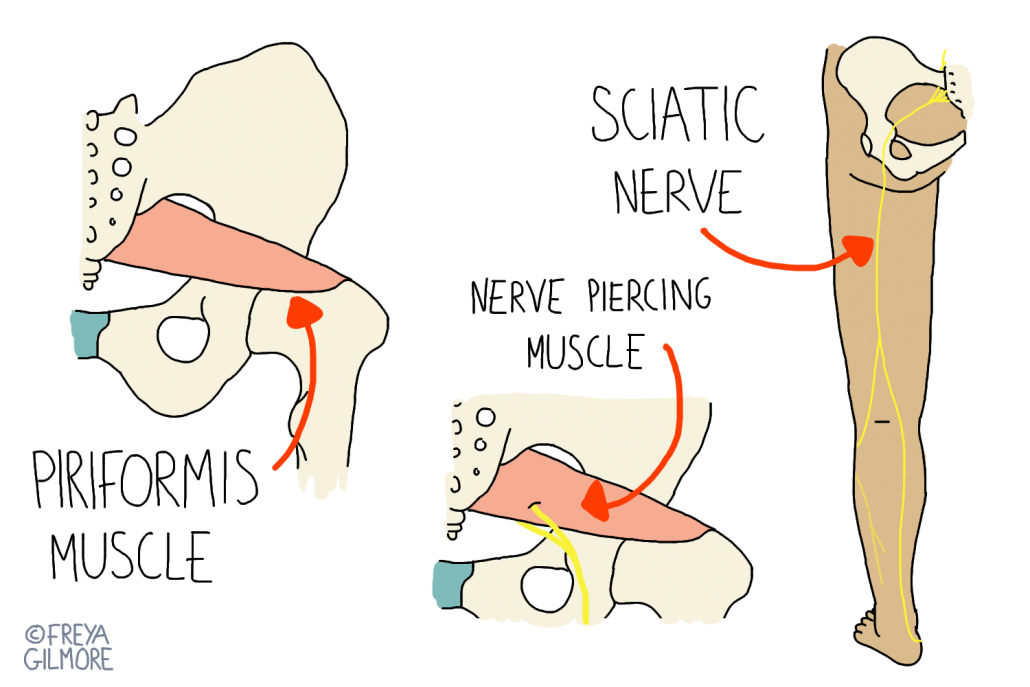Piriformis syndrome is a form of sciatica. Sciatica is a specific problem, not just a generic term for leg pain. The sciatic nerve, which runs from just outside the spine down the back of the thigh and down to the foot, is irritated. Symptoms such as pins and needles, numbness, or shooting pain may present along the course of the nerve. This is the same in piriformis syndrome, as the term refers to sciatica caused by irritation in or around the piriformis muscle.

The Piriformis Muscle
The piriformis muscle is a small muscle deep in the buttock. Its role is to help to move the hip joint. Everyone has slightly different anatomy, but the sciatic nerve generally runs close to the muscle. For some people, some or all of the nerve pierces through the muscle itself. These people may be predisposed to piriformis syndrome, as little tightness would be required to compress and irritate the nerve.
The muscle may become tight after starting a new exercise or activity. Similarly, suddenly increasing the frequency or intensity of an existing exercise could also encourage it to tighten. If you are increasing your exercise to reach a goal, it is generally a good idea to do so slowly. Leave plenty of time to modify your training if you are working up to a sporting event. We can help advise you in your exercise plan as part of your treatment.
Buttock muscles, and others on the back of the body, become tighter during pregnancy as the centre of gravity moves forwards. The growing bump demands these muscles to work harder to keep the mother upright, and the piriformis is no exception. Early treatment may help to reduce the chance of also developing PGP.
The Pain Cycle
The body’s response to pain is to try and protect itself. Unfortunately, this reaction can sometimes make symptoms worse. If the muscle is tight enough to irritate the nerve, the body may perceive the nerve’s symptoms as danger. It may then send an instruction for the buttock muscles to tense to protect the local area, inadvertently causing further irritation. It can be very difficult to manage this on your own, but your osteopath can work to calm down the nerve and relax the muscle at the same time. This can help to break the cycle and get you back to normal.
Management
Alongside work to relax the muscle and calm the local nervous system, we might give you exercises. Simple exercises to work on both the muscle and nerve might be appropriate. Otherwise, it might only be necessary to focus on one or the other.
If you keep getting episodes of piriformis syndrome, you might want to learn why it keeps coming back. Working with the information you give us, we can look for factors. As mentioned above, changes to your activity could be the cause. There may also be something you repeatedly do that causes direct pressure to the buttock. This could be the case if your symptoms coincide with some chairs and not others. If the patterns are not immediately obvious, don’t worry. There may be information in the rest of the examination that helps us to work it out.
When nerves are irritated, they can take a long time to get completely back to normal. The sooner we address it the better, but even if your symptoms are chronic before you come to clinic, know that it is unlikely that your pain will last forever.
Click here to make an appointment in Alsager for your sciatica.

